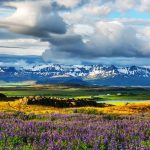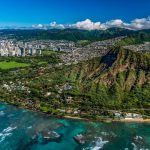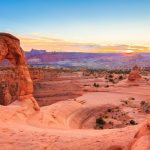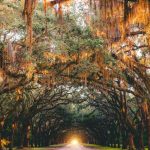Iceland offers some of the world's most spectacular aurora viewing opportunities, with pristine landscapes and minimal light pollution. The best places to see northern lights in Iceland include Jokulsarlon Glacier Lagoon, Snaefellsnes Peninsula, and Thingvellir National Park, each providing unique backdrops for this celestial dance.
Keep reading as we explore Iceland's most magical aurora hunting spots that will transform your northern lights dreams into unforgettable memories.
List of Contents
- 1. Jokulsarlon Glacier Lagoon: Nature's Mirror
- 2. Snaefellsnes Peninsula: The Arctic Riviera
- 3. Thingvellir National Park: Where Continents Meet
- 4. Westfjords: Iceland's Best-Kept Secret
- 5. Myvatn Area: Volcanic Wonderland
- 6. Reynisfjara Black Sand Beach: Dramatic Contrast
- 7. Grotta Lighthouse: Reykjavik's Hidden Gem
- 8. Perlan Observation Deck: Urban Aurora
- 9. Hvitserkur: The Troll Rock
- 10. Siglufjordur: Arctic Circle Proximity
- Your Northern Lights Adventure Awaits
1. Jokulsarlon Glacier Lagoon: Nature's Mirror
The icebergs floating in this glacial lagoon create perfect reflections of the northern lights, doubling the magic above and below. The contrast between the aurora's green ribbons and the blue-white ice creates photographs that seem almost impossible.

I remember standing here at midnight in February, watching the lights dance across both sky and water while seals occasionally surfaced between the icebergs. The silence was profound—only the gentle crackling of shifting ice.
The lagoon stays ice-free year-round, making it accessible even in harsh winter conditions. Park near the main viewing area and dress warmly—the glacial winds can be fierce.
Quick Facts:
- Peak Season: September-March
- Getting There: 4.5-hour drive from Reykjavik via Ring Road
- Entry Fee: Free
- Recommended Stay: 2-3 nights in nearby Hofn
- Sub-locations: Diamond Beach, Breidamerkurjokull Glacier
2. Snaefellsnes Peninsula: The Arctic Riviera
This peninsula offers diverse landscapes within a compact area—from volcanic peaks to dramatic coastlines. Kirkjufell mountain provides one of Iceland's most photographed northern lights scenes, though locals know the quieter spots along the southern shore offer equally stunning views.
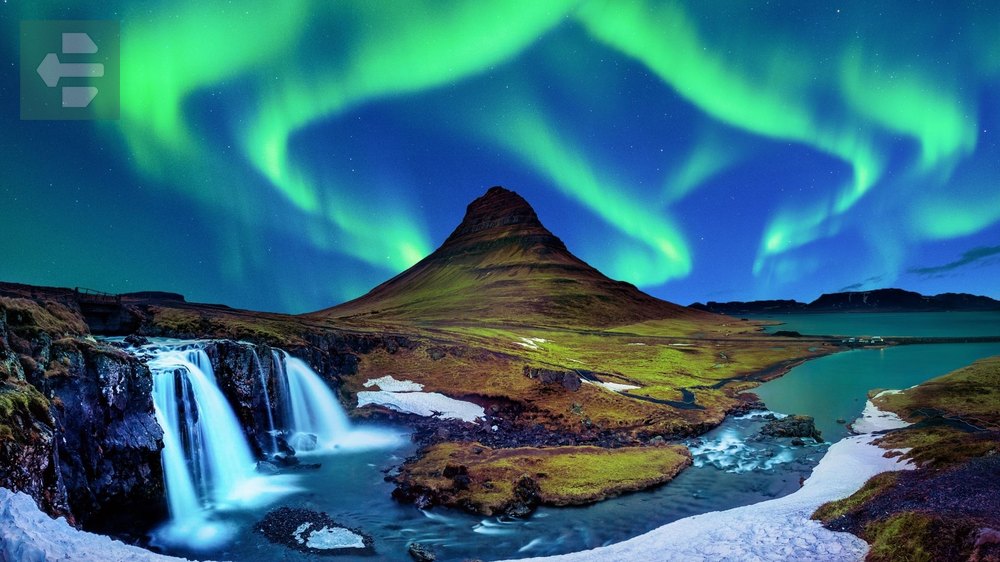
The Snaefellsjokull glacier sits atop a volcano, creating an otherworldly backdrop when the aurora appears. Small fishing villages dot the coastline, their few lights adding warmth to the stark winter landscape.
Drive the peninsula loop slowly—aurora can appear suddenly, and you'll want safe pullover spots ready.
Quick Facts:
- Peak Season: October-March
- Getting There: 2-hour drive from Reykjavik
- Entry Fee: Free
- Recommended Stay: 2-4 nights in Stykkisholmur or Grundarfjordur
- Sub-locations: Kirkjufell, Snaefellsjokull National Park, Arnarstapi
3. Thingvellir National Park: Where Continents Meet
Standing in the rift valley where the Eurasian and North American tectonic plates separate creates a humbling perspective when the northern lights appear overhead. The vast plain stretches endlessly, providing unobstructed sky views in every direction.

The historical significance adds weight to the experience—Iceland's parliament met here for nearly 900 years. When aurora dances above this ancient gathering place, you feel connected to centuries of human stories.
Park administrators keep the main area accessible year-round, clearing snow from key viewing spots and maintaining restroom facilities.
Quick Facts:
- Peak Season: September-April
- Getting There: 45-minute drive from Reykjavik
- Entry Fee: Free
- Recommended Stay: Day trip or overnight in nearby Laugarvatn
- Sub-locations: Almannagjá gorge, Oxararfoss waterfall, Lake Thingvallavatn
4. Westfjords: Iceland's Best-Kept Secret
The Westfjords receive fewer visitors, meaning darker skies and more solitude for aurora viewing. The dramatic fjords create natural amphitheaters where the northern lights seem to perform exclusively for you.
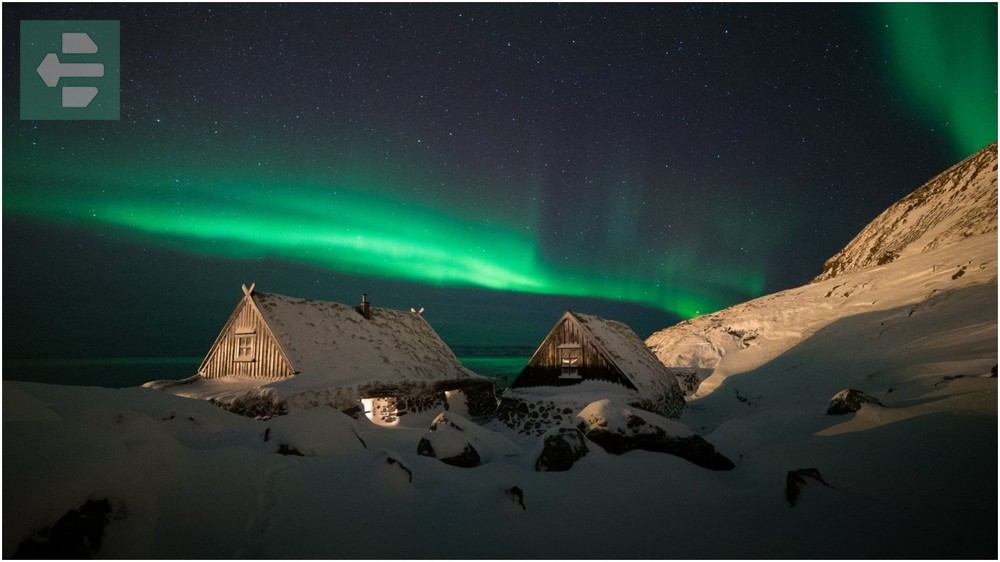
In March, I watched the aurora reflect off the snow-covered mountains surrounding Isafjordur while arctic foxes left tracks in the snow nearby. The remoteness makes every aurora sighting feel like a personal discovery.
The roads can be challenging in winter, but the payoff in terms of pristine viewing conditions and stunning landscapes makes the effort worthwhile.
Quick Facts:
- Peak Season: September-March
- Getting There: 5-6 hour drive from Reykjavik or domestic flight to Isafjordur
- Entry Fee: Free
- Recommended Stay: 3-4 nights minimum
- Sub-locations: Isafjordur, Dynjandi waterfall, Hornstrandir Nature Reserve
5. Myvatn Area: Volcanic Wonderland
The otherworldly landscape around Lake Myvatn combines volcanic craters, lava fields, and geothermal features with excellent northern lights viewing. The area's unique geological formations create dramatic silhouettes against the aurora-lit sky.

The pseudo-craters at Skutustadagigar look like alien landscapes when bathed in green aurora light. Steam from nearby geothermal areas adds an ethereal quality to the already surreal scene.
Winter temperatures here can be extreme, but the Myvatn Nature Baths provide a warm refuge after hours of aurora watching.
Quick Facts:
- Peak Season: September-March
- Getting There: 5-hour drive from Reykjavik
- Entry Fee: Free (Nature Baths separate fee)
- Recommended Stay: 2-3 nights in Reykjahlid
- Sub-locations: Dimmuborgir lava field, Hverir geothermal area, Godafoss waterfall
6. Reynisfjara Black Sand Beach: Dramatic Contrast
The black volcanic sand creates striking contrast against the green northern lights, while the famous basalt columns add geometric patterns to your aurora photographs. The powerful Atlantic waves provide a dramatic soundtrack to the light show above.

You'll understand why this beach appears in countless films when you see the aurora reflecting in the wet black sand. The combination of sea, volcanic rock, and celestial lights creates an almost cinematic experience.
Stay well back from the waves—they're unpredictable and dangerous, especially in winter darkness.
Quick Facts:
- Peak Season: September-April
- Getting There: 2.5-hour drive from Reykjavik via Ring Road
- Entry Fee: Free
- Recommended Stay: 1-2 nights in Vik
- Sub-locations: Reynisdrangar sea stacks, Dyrholaey arch, Vik village
7. Grotta Lighthouse: Reykjavik's Hidden Gem
This small lighthouse on Reykjavik's Seltjarnarnes peninsula offers surprising aurora viewing despite the city's proximity. The geothermal beach beside the lighthouse provides a unique warm-up spot during cold aurora hunts.

The lighthouse's red light creates interesting foreground elements in aurora photographs, while the nearby geothermal area keeps your feet warm in natural hot springs. Many locals consider this their secret aurora spot.
Parking is limited, so arrive early during peak aurora season. The short walk from the parking area adds to the adventure.
Quick Facts:
- Peak Season: September-March
- Getting There: 20-minute drive from central Reykjavik
- Entry Fee: Free
- Recommended Stay: Day trip from Reykjavik
- Sub-locations: Seltjarnarnes peninsula, geothermal beach, nearby golf course
8. Perlan Observation Deck: Urban Aurora
Reykjavik's distinctive glass dome offers 360-degree city views and surprising aurora visibility on clear nights. The heated indoor viewing areas make this an excellent backup option when weather turns harsh.

The museum's aurora exhibition helps you understand the science before you witness the reality. When conditions align, you can see the northern lights dancing above Iceland's capital while staying warm and comfortable.
The rotating glass dome provides constantly changing perspectives, perfect for photographing aurora over urban landscapes.
Quick Facts:
- Peak Season: September-March
- Getting There: 10-minute drive from central Reykjavik
- Entry Fee: Museum admission required
- Recommended Stay: 2-3 hours visit
- Sub-locations: Oskjuhlid hill, geothermal tanks, city center views
9. Hvitserkur: The Troll Rock
This 15-meter basalt stack rises from Vatnsnes peninsula's waters like an ancient troll turned to stone. Legend says it was indeed a troll caught by sunrise, making aurora sightings here feel especially magical.

The isolated location means minimal light pollution and maximum aurora impact. When the northern lights appear behind this dramatic rock formation, the combination creates one of Iceland's most distinctive aurora photographs.
The rough gravel road requires careful winter driving, but photographers consider Hvitserkur among Iceland's most rewarding aurora destinations.
Quick Facts:
- Peak Season: September-March
- Getting There: 3-hour drive from Reykjavik via Vatnsnes peninsula
- Entry Fee: Free
- Recommended Stay: Day trip or overnight in Blonduos
- Sub-locations: Vatnsnes peninsula, seal watching areas, Borgarvirki fortress
10. Siglufjordur: Arctic Circle Proximity
This picturesque fishing town near the Arctic Circle offers some of Iceland's most reliable aurora viewing. The surrounding mountains create a natural bowl that seems to concentrate the northern lights above the colorful houses.

The town's herring museum tells stories of Iceland's fishing heritage, but visitors come for the aurora that appears with remarkable frequency due to the northern latitude. The contrast between the cozy town lights and the wild aurora creates memorable scenes.
Local fishing boats often venture out during aurora season, their lights creating interesting compositions with the celestial display above.
Quick Facts:
- Peak Season: August-April (extended season due to latitude)
- Getting There: 4-hour drive from Reykjavik or domestic flight to Akureyri
- Entry Fee: Free
- Recommended Stay: 2-3 nights minimum
- Sub-locations: Trollaskagi peninsula, nearby skiing areas, Akureyri city
Your Northern Lights Adventure Awaits
The best places to see northern lights in Iceland offer more than just aurora viewing—they provide transformative experiences that connect you with nature's most spectacular light show. From the otherworldly beauty of Jokulsarlon's floating icebergs to the intimate charm of Siglufjordur's fishing village, each location promises its own magic.
Pack your warmest clothes, charge your camera batteries, and prepare for nights that will redefine your understanding of natural beauty. Iceland's aurora dance differently at every location, ensuring each viewing becomes a unique memory.
The northern lights are calling. Iceland is ready to show you wonders that exist nowhere else on Earth.

